How to manage plant pests and diseases in your victory garden
The COVID-19 pandemic has boosted interest in home gardening. Three scientists who garden explain some basic methods for controlling common insects and microbes that can spoil your crop.
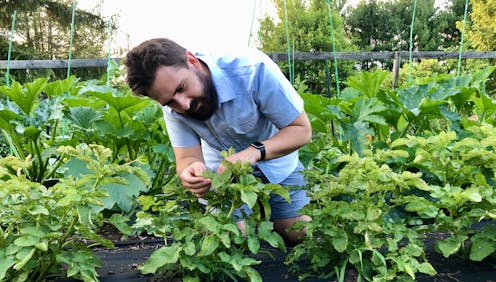
Home gardening is having a boom year across the U.S. Whether they’re growing their own food in response to pandemic shortages or just looking for a diversion, numerous aspiring gardeners have constructed their first raised beds, and seeds are flying off suppliers’ shelves. Now that gardens are largely planted, much of the work for the next several months revolves around keeping them healthy.
Contrary to the Biblical adage, we do not necessarily reap what we sow. As researchers specializing in plant pathology and entomology, we have devoted our careers to understanding and managing plant pests and pathogens. We are also gardeners with varying levels of experience and have seen firsthand the damage these insects and disease-causing agents can inflict.
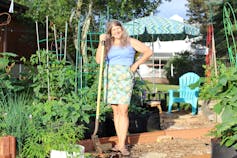
Plant health is essential for seeing your garden succeed all the way to harvest. The United Nations General Assembly has declared 2020 as the International Year of Plant Health to help bring needed attention to pests and diseases that threaten global food production.
Thousands of pests and pathogens are known to target commercial crops, but a few usual suspects are routinely responsible for havoc in gardens across the U.S. Although each organism’s preferences vary, a few common tactics can help you detect them and protect your plants.
Start with prevention
Just as preventive steps like maintaining a balanced diet help keep humans healthy, home growers can take many actions to help their gardens thrive.
One key step is assessing soil fertility – the ability of soil to sustain plant growth – which can vary widely depending on your location and soil type. Low soil fertility limits food production and predisposes plants to disease and pests. University extension soil testing labs can help evaluate the quality of garden soil and identify nutrient deficiencies and acidic soils, often at no charge.
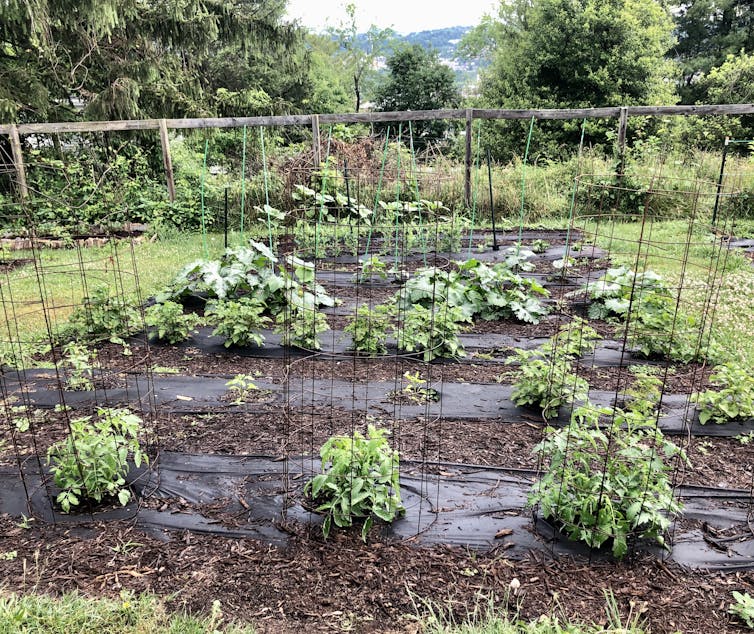
Suppressing weeds, either through mulching or weeding by hand each week, increases air flow and reduces humidity around garden plants, making it harder for pests and pathogens to thrive. Weed control ensures that nutrients are available for the plants you want to grow.
Proper spacing between plants is also important. Crowding can contribute to disease and pest outbreaks, so check and follow recommendations on seed packs or online as you add and move plants throughout the season. You can always cull plants after they come up to help with spacing. In small gardens, fewer plants that are properly supported can produce a bigger harvest than many overcrowded plants.
[You’re smart and curious about the world. So are The Conversation’s authors and editors. You can get our highlights each weekend.]
And then there’s the weather. Frost, hail, drought and flooding all pose unique risks to plants. Inconsistent rainfall can kill thirsty plants more quickly than infertile soils. Both too little and too much water will stress plants and can make them more vulnerable to severe pest and pathogen outbreaks.
A general rule of thumb is to follow a consistent daily watering regimen – preferably first thing in the morning – and to avoid over-watering, which can encourage root pathogens in soil.
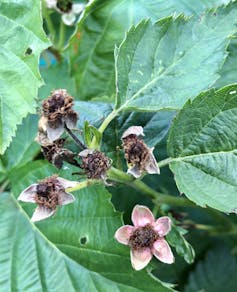
Diagnosing problems
Common plant pathogens include viruses, bacteria, nematodes, oomycetes and fungi. All of these microorganisms, especially at an early stage of infection, are too small to see. But when they proliferate, they cause changes in plants that we can recognize.
Unlike insects, which move around on six legs or on wings through the air, pathogens can move unseen and unchecked from leaf to leaf on the wind, through the soil or in droplets of water. Some microbes have even formed intimate relationships with insects and use them as vehicles to move from plant to plant, which makes these pathogens even more challenging to manage. Unfortunately, by the time some pathogens make their presence known, the damage is already done.
We recently conducted a Twitter poll of gardeners nationwide to find out which culprits plagued their gardens. People named aphids, squash vine borers, squash bugs and flea beetles as the most problematic insect pests. Their most troublesome pathogens included powdery mildew, tomato bacterial wilt and cucurbit downy mildew.
To manage such perennial challenges, the first step is to spend time closely looking at your plants. Do you notice any insects consistently hanging around, or molds colonizing leaves or other plant parts? How about symptoms such as blight, stunting, or leaves that are yellowing, browning or wilting?
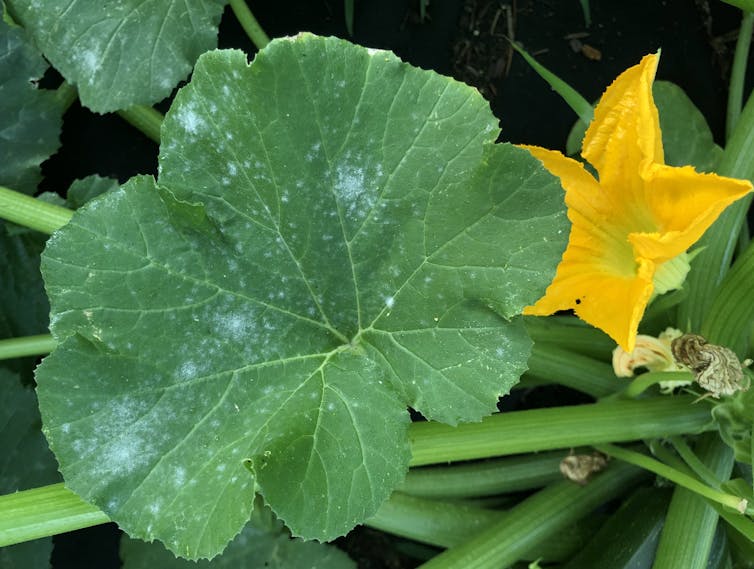
There are countless resources online for keen-eyed and curious gardeners looking to identify and manage pests and diseases. Try uploading a photo to the iNaturalist app or a Facebook gardeners group that can offer a community-sourced ID. Plant disease clinics in your state will also diagnose plant damage from diseases and pests for free or at low cost.
Once you’ve identified a problem serious enough to intervene, the land grant extension system can provide solutions. Extension programs at land grant schools like West Virginia University and Penn State University offer critical information on agriculture and management of pests and diseases in multiple languages for commercial and home growers.
Their resources include information on safe and proper use of pesticides as part of integrated pest management strategies. This approach employs pesticides in a targeted way along with non-chemical control methods and cultural practices, such as choosing native plants. Our professional societies, including the American Phytopathological Society, also offer a compendium series to help users diagnose and treat pests and diseases.
Those who are serious about learning and sharing their experience with others may want to consider Master Gardener programs, which train and certify community members on the latest evidence-based gardening techniques, tailored to their growing area. Master Gardeners pay it forward by training new Master Gardeners and answering questions for any gardener.
Plant pests are a daily reminder that gardens do not exist in a vacuum, and gardeners shouldn’t struggle alone either. Joining the gardening community takes attentiveness and time, but we believe the investment required to become an active member of your local gardening community is well worth it. With experience, the nervous tightrope act of keeping pests at bay and food on the table becomes a delicate dance that can help us appreciate where our food comes from – and ultimately, our place in the global ecosystem.
Matt Kasson receives funding from USDA and The Ohrstrom Foundation.
Carolee Bull receives funding from the USDA and from the mushroom industry, and matching funds from seed companies for her research projects.
Brian Lovett does not work for, consult, own shares in or receive funding from any company or organization that would benefit from this article, and has disclosed no relevant affiliations beyond their academic appointment.
Read These Next
What’s at stake in Trump’s executive order aiming to curb state-level AI regulation
In the absence of comprehensive federal AI regulation, states have stepped in. The Trump administration,…
Data centers need electricity fast, but utilities need years to build power plants – who should pay?
How many data centers will be built – and how much electricity they’ll need – is uncertain. Being…
Sleep problems and depression can be a vicious cycle, especially during pregnancy − here’s why it’s
Inadequate sleep can have negative downstream effects on everyday cognitive functioning and mental health,…





